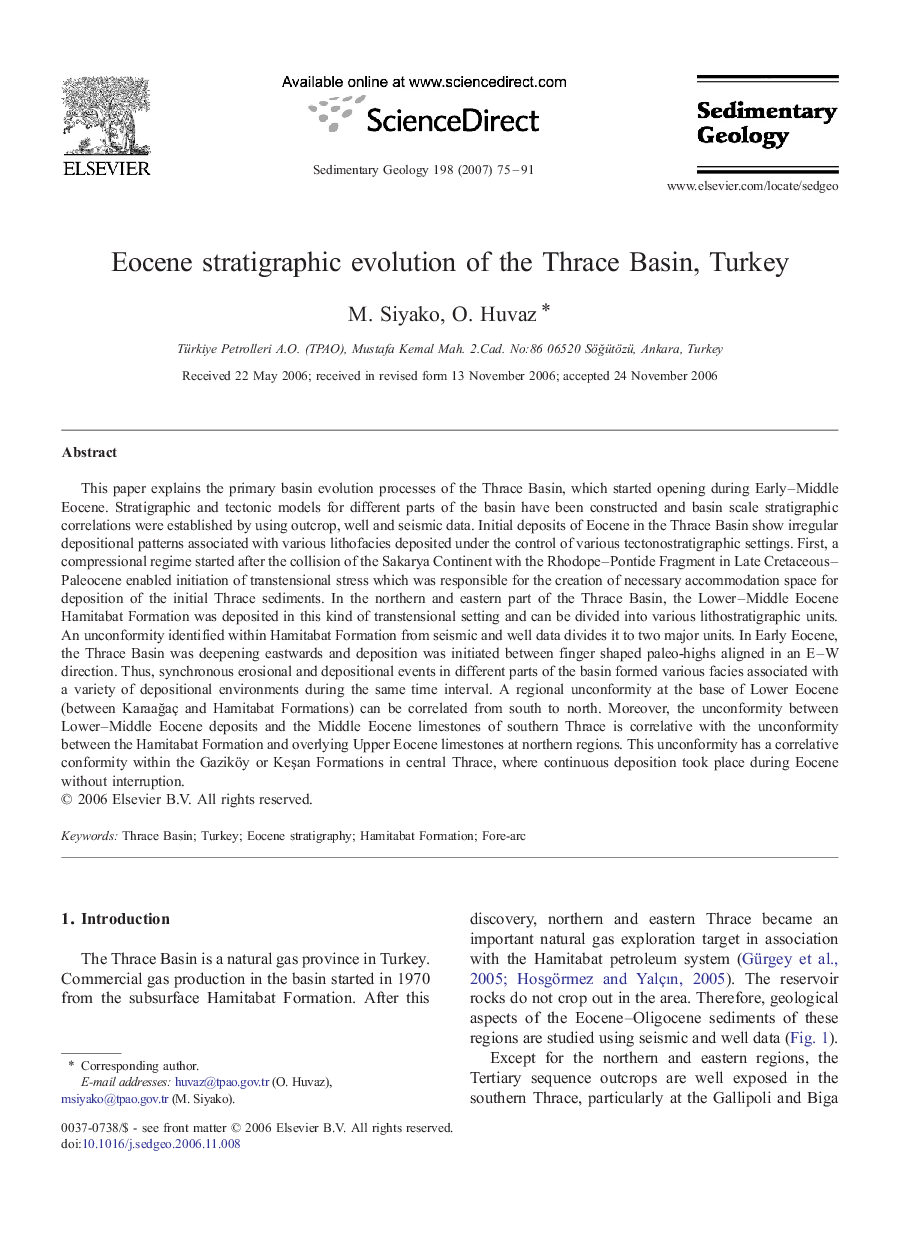| Article ID | Journal | Published Year | Pages | File Type |
|---|---|---|---|---|
| 4690839 | Sedimentary Geology | 2007 | 17 Pages |
This paper explains the primary basin evolution processes of the Thrace Basin, which started opening during Early–Middle Eocene. Stratigraphic and tectonic models for different parts of the basin have been constructed and basin scale stratigraphic correlations were established by using outcrop, well and seismic data. Initial deposits of Eocene in the Thrace Basin show irregular depositional patterns associated with various lithofacies deposited under the control of various tectonostratigraphic settings. First, a compressional regime started after the collision of the Sakarya Continent with the Rhodope–Pontide Fragment in Late Cretaceous–Paleocene enabled initiation of transtensional stress which was responsible for the creation of necessary accommodation space for deposition of the initial Thrace sediments. In the northern and eastern part of the Thrace Basin, the Lower–Middle Eocene Hamitabat Formation was deposited in this kind of transtensional setting and can be divided into various lithostratigraphic units. An unconformity identified within Hamitabat Formation from seismic and well data divides it to two major units. In Early Eocene, the Thrace Basin was deepening eastwards and deposition was initiated between finger shaped paleo-highs aligned in an E–W direction. Thus, synchronous erosional and depositional events in different parts of the basin formed various facies associated with a variety of depositional environments during the same time interval. A regional unconformity at the base of Lower Eocene (between Karaağaç and Hamitabat Formations) can be correlated from south to north. Moreover, the unconformity between Lower–Middle Eocene deposits and the Middle Eocene limestones of southern Thrace is correlative with the unconformity between the Hamitabat Formation and overlying Upper Eocene limestones at northern regions. This unconformity has a correlative conformity within the Gaziköy or Keşan Formations in central Thrace, where continuous deposition took place during Eocene without interruption.
